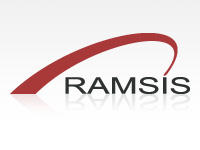Global construction will grow by 67%, from $7.2 trillion today to $12 trillion in 2020. However, the industry wastes more than $120 billion annually in the United States alone because of out-of-control delays, cost overruns, and other inefficiencies. The AEC industry needs to industrialize and standardize, much as manufacturing industries did decades ago, by leveraging design collaboration, prefabrication and modularization.
The construction industry has been moving towards the industrialization of construction, based on lean principles and practices, to refine the end-to-end design and construction process.
Optimized Construction provides four key benefits. The first benefit is controlling costs through better visibility. Real time project status will identify tasks which cause cost risks. Additionally, there is a link to procurement which enhances cost control. The second benefit is improved cash flow. Better measurement of work breakdown and completion results in earned value approach. This, coupled with prefab delivery, will result in earlier payment. The third benefit is the single 3D version of the truth. 3D visualization results in clear understanding of a complex project through a common language. Workers at all levels can understand their specific role and how that fits in the grand design. The fourth benefit is minimized waste. Achieve Lean project delivery and minimize waste with an executable and reasonable plan based on the real state of the project in real time.
Optimized Construction Industry Solution Experience provides a collaboration based project backbone that enables centralized project and data management, construction simulation for better planning and execution, and the right information to be available to the right people at the right time.
Discover the values of Optimized Construction Industry Solution Experience:
- Reduces schedule and budget overruns through real-time project updates that prevent problems before they happen.
- Keeps expectations aligned through improved communication among all project stakeholders.
- Prevents outdated communications by ensuring consistent information is used and maintaining 4D as a common language.
- Simplifies information access by separating the most meaningful information from the flood of project data.
- Keeps the project on its critical path by dramatically reducing project risks and wasted time.











